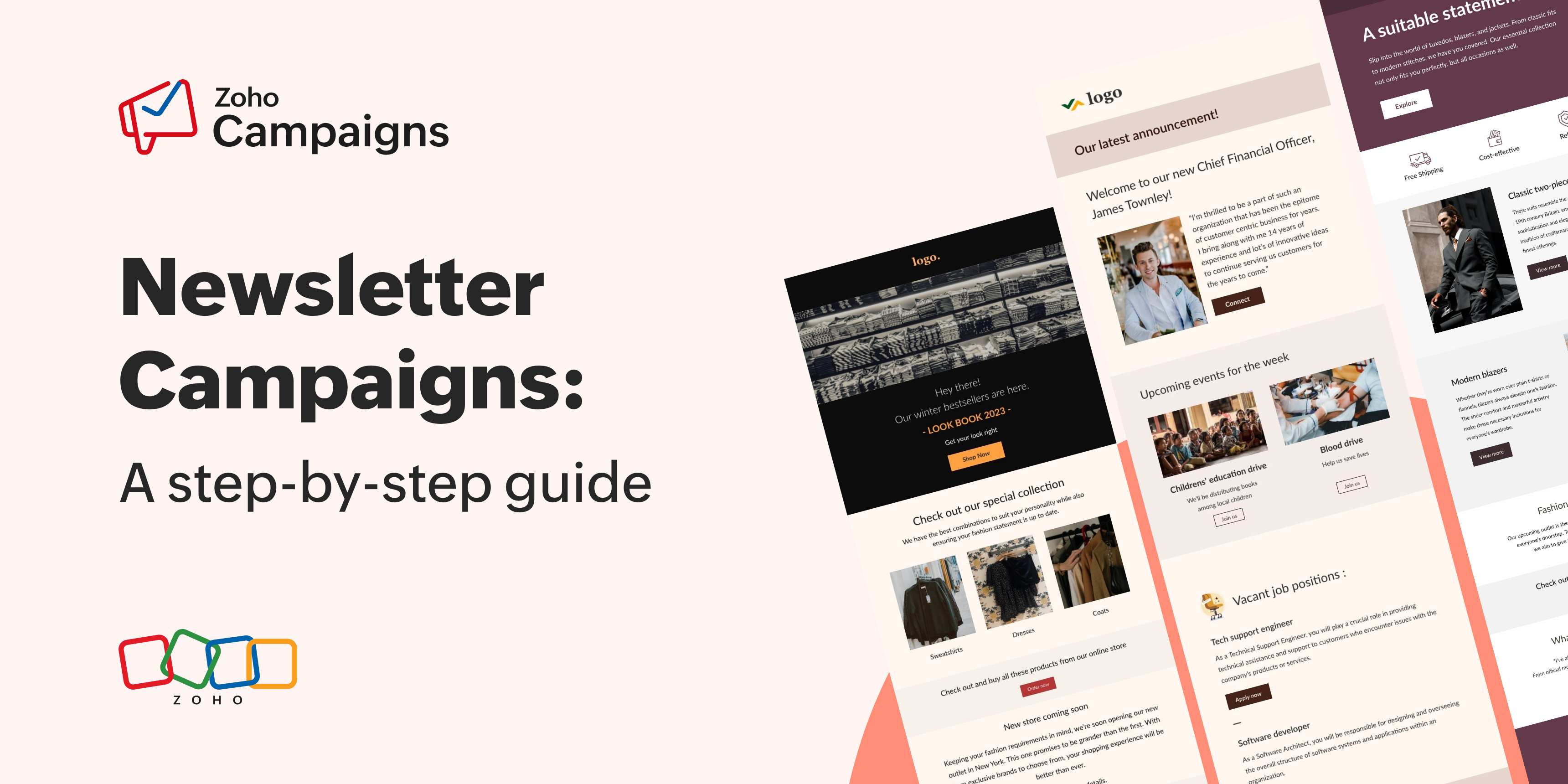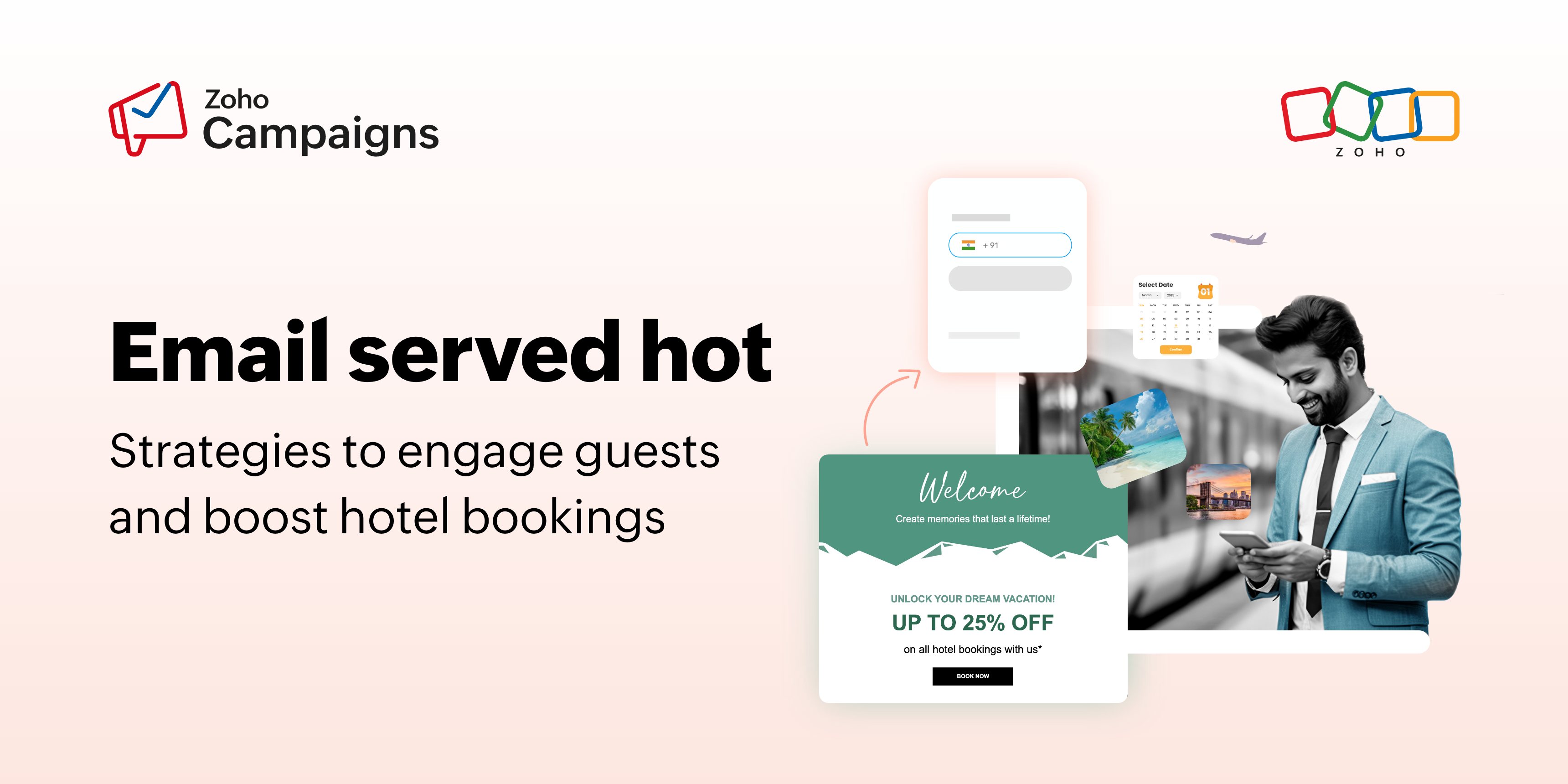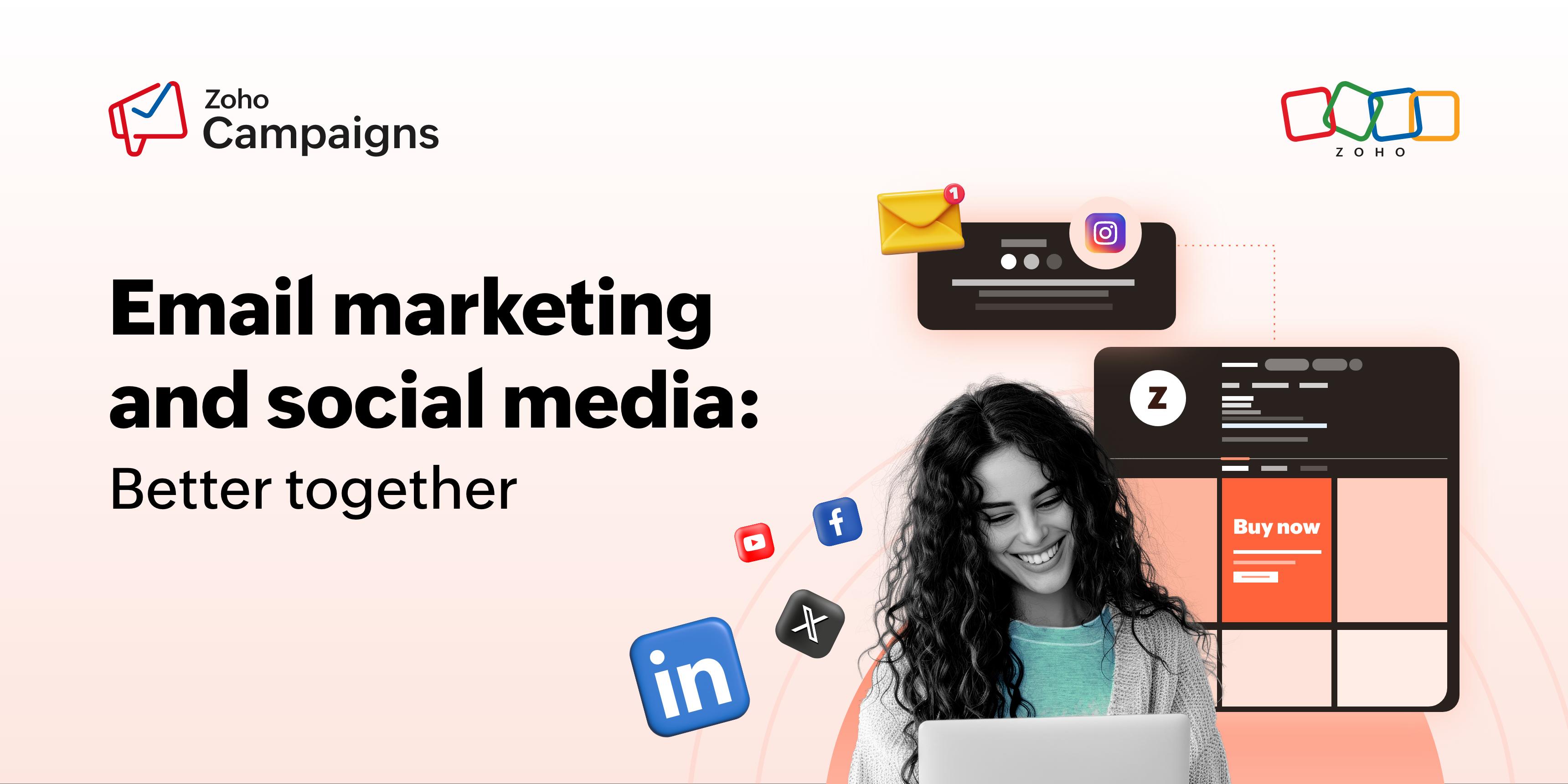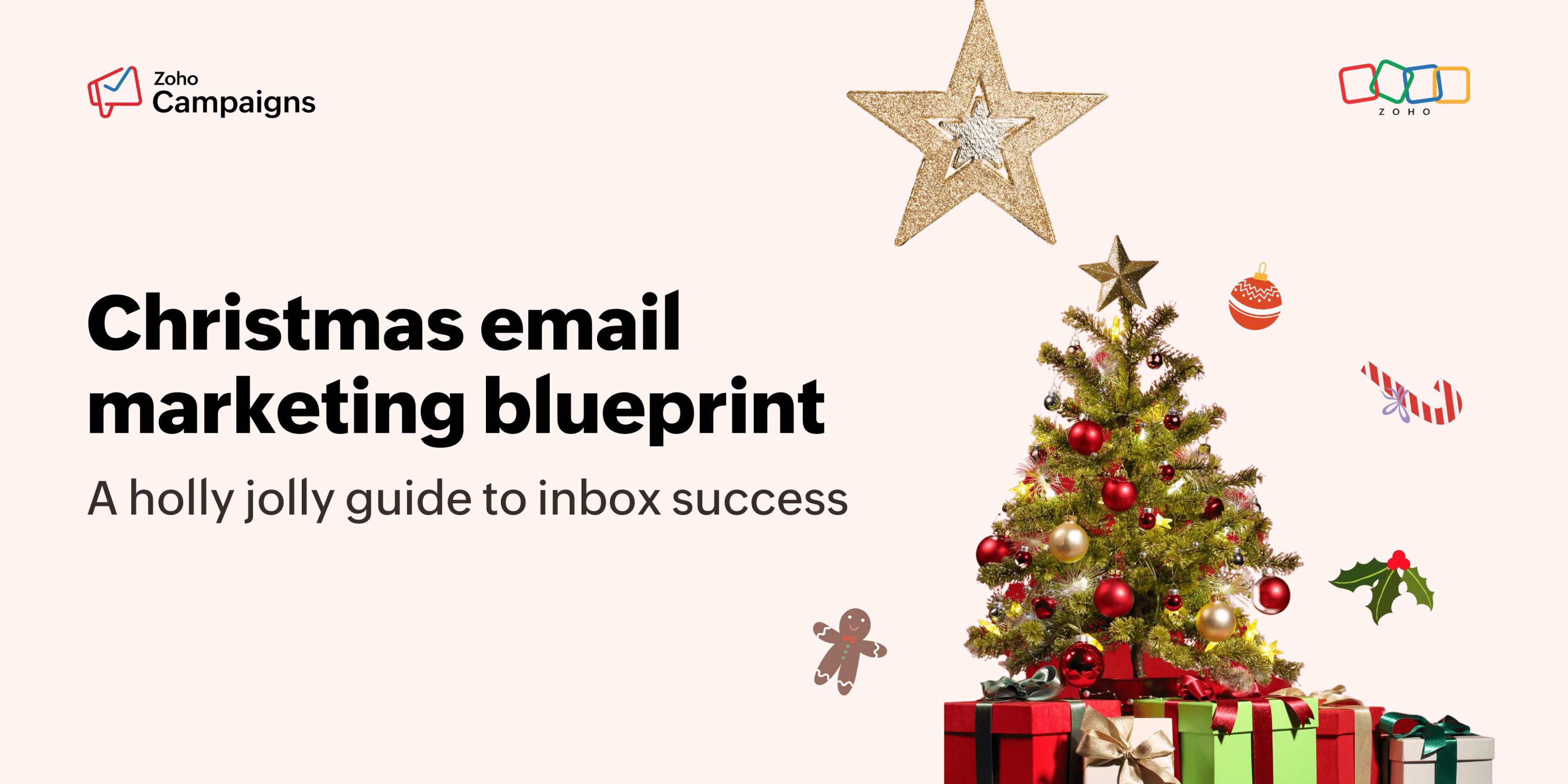- HOME
- Email Marketing
- How to start a newsletter: The best practices
How to start a newsletter: The best practices
- Last Updated : September 17, 2024
- 256 Views
- 7 Min Read

Influencers use newsletters to connect with their audiences on a deeper level, monetize their influence, drive engagement, and build a strong personal brand. It's easy to get ads on social media, but to build a content engine and establish your brand's voice consistently is something you can do more easily with a newsletter.
Here are some actionable items to help you get your newsletter started.
The core content
Those who are in the content business know it's not easy to churn out a newsletter every day, and even if you do, you won't make many fans by crowding your audience's inbox. Decide on a broad range of topics your newsletter will relate to. Ask yourself why a person should subscribe to your newsletter and, more importantly, why they should open it when they have a hundred other things to do.
Finding it hard to get inspiration while starting off with your newsletter? We know what exactly you need here. For inspiration, take a look at Buzzfeed's newsletter page. Their website covers everything under the sun, but they've neatly segmented their topics so that readers can opt in accordingly. They also give their readers clear information about the frequency of their newsletters!

Automate your emails
If you haven't already started doing it, you're a bit late to the party, but you're heading in the right direction. As an influencer, there's only so much you can do manually. Automation becomes all the more necessary as your business grows. We have you covered in that regard. Check out our blog on email automation and get started.
Optimize your newsletters for mobile devices
People today are constantly on the move and read content across multiple devices with several interruptions in between, so it's important to give your newsletter a responsive design. How? The best way is to use an email service provider who automatically does this for you. There are several factors to keep in mind when it comes to responsive design, so check out our complete guide to responsive design to learn more!
Implement dynamic, personalized content
In an era when even print media are leaning towards hyper-local publications to connect with their readers, you have no excuse to not customize your content for your readers. You don't have to type out different emails to each recipient manually. Instead, you can modify different sections of your email templates based on individual recipients' preferences, geographical backgrounds, reading habits, or other unique attributes. This is where it helps to have a good email service provider like Zoho Campaigns, which has a built-in feature that helps you build dynamic content for your emails.
Consistency is key
People look forward to your newsletter when you send it out at regular intervals. By being consistent with your emails, you stay top-of-mind and build familiarity and trust over time. This is also how you make your newsletter a part of their habit.
Take the case of events and media company The Future Party. It all began when Boye Fajinmi was pursuing a typical Hollywood career with Paramount Pictures and began hosting parties for his friends. This eventually led to him starting The Future Party, which hosts dozens of events each year and works with some of the largest luxury brands in the world. It also publishes a daily newsletter that reaches 150,000 people with news and trends in business, entertainment, and culture.
Set a cadence
Establishing a cadence involves determining the ideal time and frequency to send your marketing emails to your subscribers. But, given that people work across time zones and have completely different schedules, is it even possible to figure out when they'll open your emails? Well, you can if you have a smart email marketing solution that comes with a send time optimization feature, which can help you boost your open rates and cut through the clutter of their inboxes.
Check out the story of Strata, a premier real estate investment platform that uses Zoho Campaigns to ensure their emails are delivered at an optimum time using Send Time Optimization.
Authenticity
Sharing stories, insights, and updates from your personal or professional life can make you seem more relatable and approachable. Readers often appreciate a behind-the-scenes look or personal anecdotes.
Justine Moore is the founder of Creator Wizard and helps content creators find and negotiate their dream sponsorships. His newsletters deliver content that appeals to the creator community through real and relatable anecdotes and examples. This explains the success of his newsletter.
Make your newsletter real. People subscribe to you because they see you as someone who relates to their issues and has some solutions for them. Generic content is uninspiring and stale, so you might as well avoid it. After all, why would someone reach out to you when they can simply find the same content on Google?

Engagement
When you send out a newsletter, try including interactive elements like polls, Q&As, or feedback requests. Go back to the example of Justin Moore and read his content. He expresses interest in knowing what his subscribers think about a given idea and encourages readers to engage with him. This is an effective way to foster a two-way conversation.
Creative visuals
A newsletter isn't just about the content you share but also about how you package it. Your newsletter should reflect your brand's visual style and present it correctly, so it's important to pay attention to its design. One way to make this part easy is by going with an email marketing platform like Zoho Campaigns, where you get a library of templates to choose from.
Valuable content
Whether it's educational, entertaining, or informative, content that offers value to a subscriber helps build goodwill. When readers see that you're offering something useful, they're more likely to feel positively about you and your brand.
Voice and tone
Whether you make your newsletter casual or professional, it's better to maintain a consistent tone. This helps in setting the tone for your relationship with your audience.
New York Times bestselling author Austin Kleon uses a newsletter to stay in touch with his readers, wherein he shares his thoughts on reading and writing. A lot of it has personal elements that even give his readers a peek into his personal life.
Choosing the right tone also depends on identifying the context and needs of your audience. The 7, a newsletter from the Washington Post, breaks down seven of the most important stories of the day for its subscribers and manages to preserve the organization's gravitas as a news institution.
Storytelling
Who says stories are just for kids? In fact, adults love stories as much as kids. Effective storytelling techniques will help you go a long way in growing your newsletter readership. People love stories about your experiences, the challenges you've faced, and the success stories of how you overcame them. Stories make you more human and relatable in a world where communication is increasingly transactional and cold.
Recognition
Acknowledging your subscribers, celebrating milestones, or even featuring their contributions can make them feel valued and appreciated.
By leveraging these strategies, newsletters become more than just a communication tool; they enable you to foster a genuine connection with your audience.
What kind of content can you include in the newsletter?
If you're not sure which topics to cover in your newsletter, we have your back. Here are some topics that can be a part of your newsletter package.
A roundup of popular blog posts or videos: Share some of your trending posts and videos. These also help in increasing the metrics of those blogs.
Company news: The people who believe in your brand are probably the people who want to be a part of it. Sharing details of internal work culture and job openings might help you find the right talent. Share interviews from your honchos and the stories of people who work behind the scenes to make your brand a success. Giving your business a face often works in one's favor.
Case studies: Case studies and customer stories speak volumes about you without you having to say much at all. There's nothing like an empowering story of how your business has made a difference in some way. These stories make your brand more human and real.
Customer deals and promotions: Whether it's a festive season or a flash sale, newsletters are a great way to let your buyers know about it. Most retail brands today rely on emailers to notify their buyers of upcoming and ongoing promotions.
Industry news: From the latest happenings to surveys and trends in the industry, you can share your hot takes along with the news bytes. This can help you position yourself as a brand with a voice that matters.
Listicles: This is not only one of the most popular ways of structuring a newsletter, but perhaps also an overused one. But listicles are popular because they present key information in an easy-to-digest format.
Recordings of past webinars: If you organize webinars on a regular basis, you can add them to your newsletters for the benefit of those who might've missed out on them.
The more people on your email list open your emails, the better your sender reputation becomes. And the better your sender reputation? The less likely you'll end up in the spam folder.













